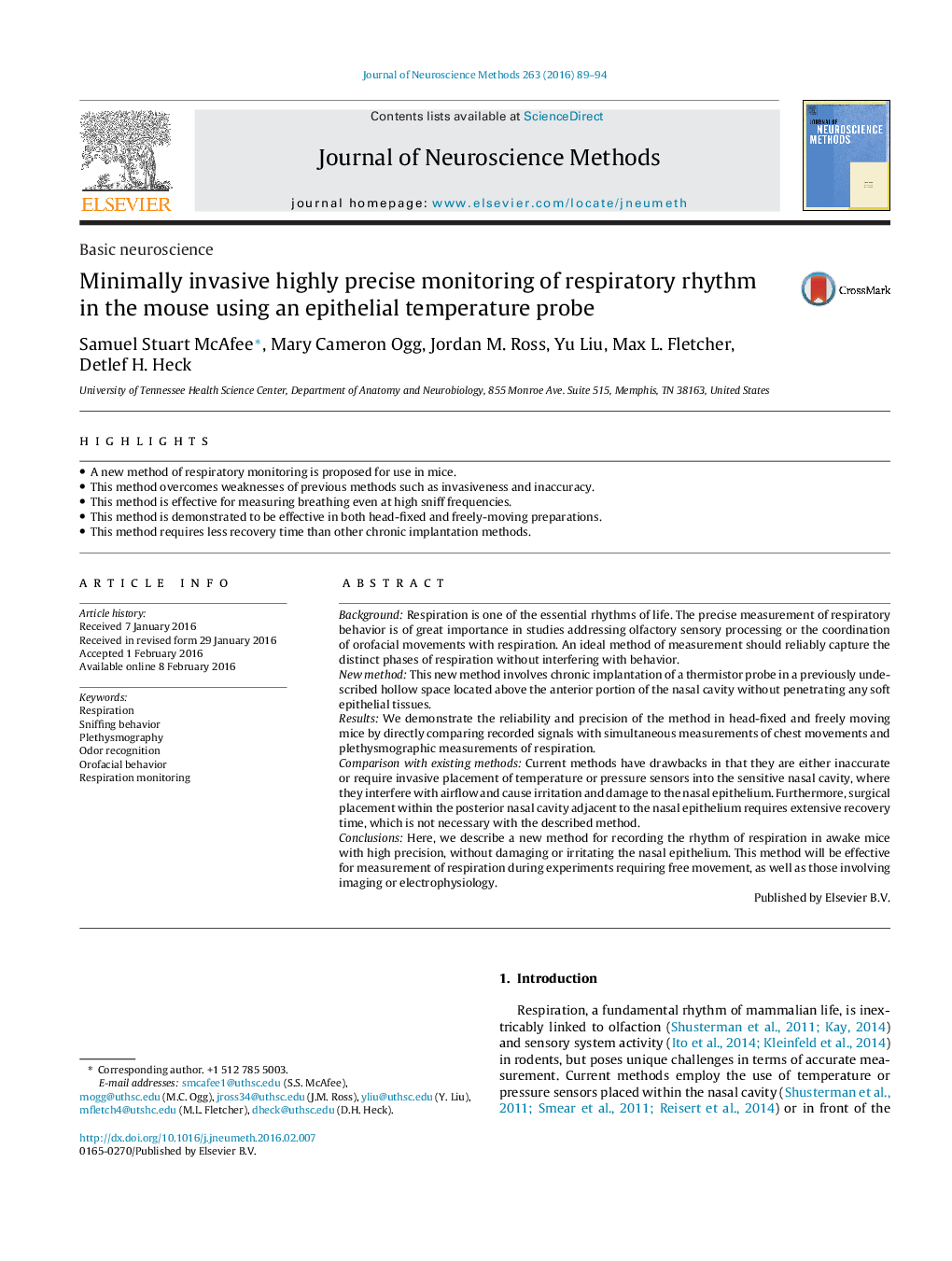| Article ID | Journal | Published Year | Pages | File Type |
|---|---|---|---|---|
| 4334891 | Journal of Neuroscience Methods | 2016 | 6 Pages |
•A new method of respiratory monitoring is proposed for use in mice.•This method overcomes weaknesses of previous methods such as invasiveness and inaccuracy.•This method is effective for measuring breathing even at high sniff frequencies.•This method is demonstrated to be effective in both head-fixed and freely-moving preparations.•This method requires less recovery time than other chronic implantation methods.
BackgroundRespiration is one of the essential rhythms of life. The precise measurement of respiratory behavior is of great importance in studies addressing olfactory sensory processing or the coordination of orofacial movements with respiration. An ideal method of measurement should reliably capture the distinct phases of respiration without interfering with behavior.New methodThis new method involves chronic implantation of a thermistor probe in a previously undescribed hollow space located above the anterior portion of the nasal cavity without penetrating any soft epithelial tissues.ResultsWe demonstrate the reliability and precision of the method in head-fixed and freely moving mice by directly comparing recorded signals with simultaneous measurements of chest movements and plethysmographic measurements of respiration.Comparison with existing methodsCurrent methods have drawbacks in that they are either inaccurate or require invasive placement of temperature or pressure sensors into the sensitive nasal cavity, where they interfere with airflow and cause irritation and damage to the nasal epithelium. Furthermore, surgical placement within the posterior nasal cavity adjacent to the nasal epithelium requires extensive recovery time, which is not necessary with the described method.ConclusionsHere, we describe a new method for recording the rhythm of respiration in awake mice with high precision, without damaging or irritating the nasal epithelium. This method will be effective for measurement of respiration during experiments requiring free movement, as well as those involving imaging or electrophysiology.
